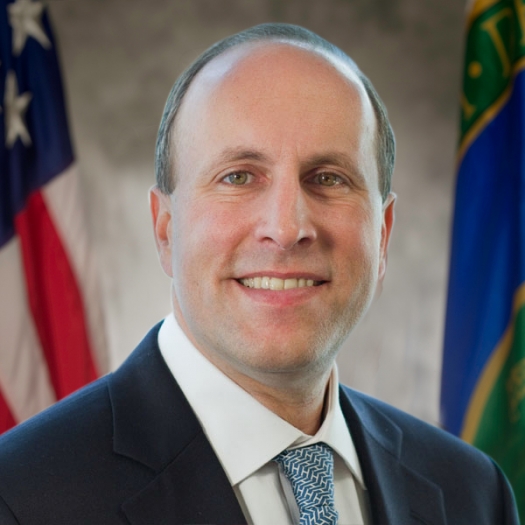
A legal fight is considered likely over the Energy Department’s new interpretation of what material should be treated high-level radioactive waste, sources suggested this week.
Not all waste resulting from reprocessing of spent nuclear fuel should be considered high-level, the DOE reaffirmed Wednesday.
Going forward, the key question will be “how radioactive it is,” Undersecretary of Energy for Science Paul Dabbar told the House Nuclear Cleanup Caucus Wednesday evening in Washington, D.C.
Under its new interpretation, DOE says some lower-risk reprocessing waste can be deemed non-HLW and be disposed of according to its radiological traits rather than its point of origin. That could speed up disposal of some waste, the agency said in a press release.
“For decades, DOE has managed nearly all reprocessing waste streams as HLW regardless of radioactivity. This one- size-fits-all approach has led to decades of delay, costs billions of dollars, and left the waste trapped in DOE facilities in the states of South Carolina, Washington, and Idaho without a permanent disposal solution,” the agency said.
The director of the South Carolina-based Savannah River Site Watch, Tom Clements, considers a court challenge likely, although nothing would be filed until after the formal announcement appears in the DOE’s supplemental notice appears in the Federal Register, which could happen next week.
“We don’t know” if there will be a legal challenge, Dabbar said after speaking to the Cleanup Caucus.
DOE says Atomic Energy Act, Blue Ribbon Report Justify Action
Dabbar said he and Anne Marie White, who recently resigned as assistant secretary of environmental management effective June 14, worked closely with a former Energy Department general counsel, Theodore Garrish, in drafting the just-released high-level waste position.
Garrish, who is now assistant secretary for the Office of International Affairs, said the existing definition in the Atomic Energy Act, and the Nuclear Waste Policy Act, grants the Energy Department leeway to decide what is highly radioactive nuclear waste, Dabbar said.
The idea of treating high-level waste in accordance with its radioactive risk profile is also supported in the Barack Obama administration’s report by the Blue Ribbon Commission on America’s Nuclear Future.
Mark Senderling, the DOE deputy assistant secretary for waste and materials management, told the Cleanup Caucus the agency’s leadership deserves credit for making a bold move. “It’s clear that people are lawyering up” for a fight, he said.
The Energy Department issued its supplemental notice on interpretation of HLW after reviewing more than 5,500 comments filed in response to an Oct. 10 Federal Register notice. Interest groups, tribes, elected officials, and the Nuclear Regulatory Commission were among stakeholders who weighed in by Jan. 9.
The agency’s position did not substantially change, compared with the interpretation published last year. The agency did clarify certain high-level waste could only be treated as Class C low-level waste or lower if it also meets the disposal criteria for a repository that could accept such waste.
“We need to match disposal sties with the waste streams,” Senderling said. The Energy Department says much waste is needlessly treated as HLW when it has radioactive characteristics similar to transuranic waste or low-level radioactive waste.
To begin, DOE is moving under the National Environmental Policy Act to consider disposing of some grouted waste from the Savannah River Site at a licensed commercial site. This would involve up to 10,000 gallons of recycled wastewater from the Defense Waste Processing Facility, which has been converted into a stable grout-type material.
The agency will look at treating the waste as low-level material and shipping it out of South Carolina, likely to a licensed commercial disposal site such as ones run by EnergySolutions in Utah, or Waste Control Specialists in Texas, according to DOE.
“At this time, DOE is not considering whether to implement the HLW interpretation at any other site or for any other waste stream,” the agency said.
The DOE moves drew swift criticism. The DOE is giving itself authority to abandon more than 100 million gallons of high-level waste at sites in South Carolina, Idaho and the state of Washington, the Natural Resources Defense Council said in a joint press release.
Dabbar rejects the assertion the Energy Department will simply abandon high-level waste in current temporary storage areas. The opposite is true, he said, pointing to the potential shipment of grouted waste out of South Carolina. In time, the undersecretary hopes nuclear communities will come to see the change should speed up waste shipments to licensed facilities.
“The massive containers of glassified high-level nuclear waste at Savannah River Site must be disposed of as required by law — in a properly licensed geologic disposal site and not via shallow burial in low-level nuclear waste facilities in Utah or Texas,” Clements said a press release.
The shipment would enable SRS to save money otherwise needed for building another facility to store vitrified material, Clements said.
The new interpretation does not change any current policies, or legal requirements, DOE said, adding many details will be spelled out in upcoming actions. This current action does not eliminate the need for the Yucca Mountain underground repository in Nevada, DOE said.
The Energy Department must still develop a permanent geologic repository to dispose of HLW generated by the Cold War nuclear-arms buildup, said Kara Colton, Energy Communities Alliance director of nuclear energy programs. The organization, which represents localities adjacent to DOE nuclear sites, penned a study about two years ago calling for DOE to make this sort of reinterpretation.
The Energy Communities Alliance also wants a formal change in high-level waste policy passed by Congress, so it could not be easily undone by future presidential administrations.